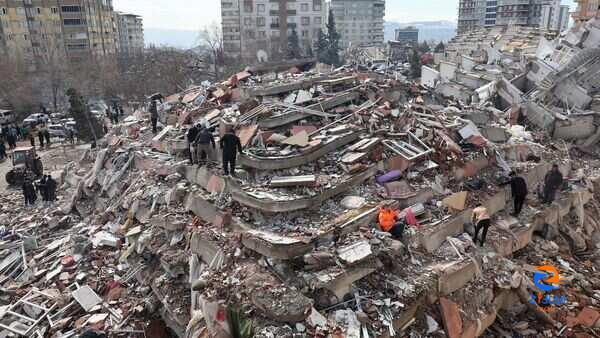
[ad_1]
A powerful 7.8-magnitude earthquake hit parts of Turkey and Syria on Monday, killing thousands and causing major structural and economic damage, according to local authorities.
Behind the catastrophic event: A so-called strike-slip movement. The U.S. Geological Survey said the strike-slip earthquake has already caused thousands of deaths and severe damage in the affected regions, and the final toll could be worse.
The initial earthquake was one of the largest strike-slip earthquakes to occur on a continent in recent times. Here’s what to know about the science behind the earthquake.
When and where did the earthquake first occur?
The first shock occurred at 4:17 a.m. local time on Monday and was 11 miles below the surface near the town of Gaziantep, Turkey, the USGS said.
The earthquake struck along the East Anatolian fault zone, a region near the junction of the Anatolia, Arabia and Africa plates, according to the USGS.
The energy released in Monday’s 7.8 earthquake is comparable to the energy released in the 1980 Mount St. Helens volcanic eruption, according to Alex Hatem, a geologist with the USGS in Golden, Colo.
What is a strike-slip movement?
A strike-slip movement occurs when tectonic plates slide past each other. In the case of the Turkey-Syria earthquake, three tectonic plates are sliding past each other along an existing fault zone in south-central Turkey.
“This area is where three tectonic plates come together; it’s a triple junction,” said Dr. Hatem. “It has not had a lot of seismic activity in the recent past; however, it is an area where a lot of stress builds up over time.”
Tectonic plates are massive slabs of rock on the Earth’s crust from 10 miles to 160 miles thick that are always slowly moving. Earthquakes occur along the boundaries of these plates, according to the USGS.
The East Anatolian fault where the 7.8-magnitude earthquake occurred slipped by 10.5 feet, while the Malatya fault where the 7.5 aftershock occurred slipped by nearly 36 feet, according to an analysis by the USGS.
Although these slips occurred underground, some areas on the surface might have ruptured as well, according to Jana Pursley, a USGS geophysicist.
Why are there aftershocks?
Bigger earthquakes tend to have more aftershocks and they tend to go on for longer, according to Susan Beck, a seismologist at the University of Arizona who has studied the tectonics of the region.
The deadly 7.8-magnitude earthquake was followed some hours later by a 7.5-magnitude shock. Dr. Beck said the 7.5-magnitude event could have been a separate earthquake along a different fault triggered by the first big earthquake. “It is somewhat unusual to have such a large aftershock,” she said.
Seismologists define “aftershocks” broadly as smaller earthquakes that can occur after a large earthquake in the affected area.
“We can’t say for how long they will last,” said Dr. Hatem. “They have already started to appear along the fault that ruptured.”
Will the aftershocks get worse?
The powerful earthquake in Turkey and Syria has already spawned dozens of aftershocks since it struck and more are expected in the coming days, according to Dr. Hatem.
These lesser tremors are sometimes evidence of the joint between plates settling back. “The whole fault is moving a little bit and is settling again,” said Ben van der Pluijm, an earthquake geologist at the University of Michigan in Ann Arbor.
Sometimes those secondary quakes represent tension that the first earthquake didn’t expel. “There’s still some energy left in the system to release, and that’s what subsequent shocks might be,” said Dr. van der Pluijm.
Download The Mint News App to get Daily Market Updates.
[ad_2]